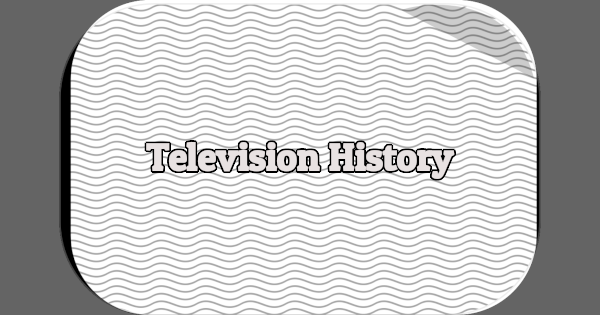December 7th, 2016 Update: Please read my essay “A Forgotten Milestone: Television and Pearl Harbor” for a revised and updated look at how TV covered the attack on Pearl Harbor.
Note: This post, originally written on December 7th, 2008 and updated on December 7th, 2009, examines how television–then in its infancy as a commercial medium–covered the attack on Pearl Harbor on December 7th, 1941. Today is the 70th anniversary of that attack.
The attack on Pearl Harbor by the Japanese took the United States by surprise on Sunday, December 7th, 1941. It was morning in Hawaii when the attack began and early afternoon on the East Coast. Of the two commercial television stations in New York City (DuMont’s W2XWV was still experimental) only NBC’s WNBT was operating. The CBS station, WCBW, took Sundays off. WNBT had only two programs scheduled:
3:30-4:30PM – Millionaire Playboy (Film)
8:40-11:15PM – Hockey: Rangers vs. Boston, at Madison Square Garden [1]
Ray Forrest, WNBT’s announcer, broke into the broadcast of Millionaire Playboy with news of the attack [2]. According to The Magic Window: American Television, 1939-1953, news of the attack on Pearl Harbor constituted television’s first bulletin and Sam Cuff of WNBT’s Face of the War stood in front of a map showing viewers where the Japanese attacks occurred [3]. That’s all I’ve been able to uncover about WNBT’s activity on December 7th, 1941. More information is available about WCBW’s broadcasts.
Over at WCBW, Richard Hubbell and Robert Skedgell served as newsreader and news writer, respectively, for the station’s two fifteen-minute newscasts that were broadcast Monday through Friday. In Now the News: The Story of Broadcast Journalism, Edward Bliss writes that Hubbell, Skedgell and WCBW program director Gilbert Seldese all rushed to the station after hearing that Pearl Harbor had been attacked; Adrian Murphy, WCBW’s president, called to say the station was going on the air with a special report [4]. Skedgell recalled that the station was on the air from 3:30PM in the afternoon on Sunday, December 7th until 1:30AM on Monday, December 8th. He had this to say about the special telecast:
There was not very much hard news that Sunday night, so much of our report was speculative: where the Japanese fleet was, what the Japanese intentions were, where the U.S. fleet had gone, how much damage it had suffered. Of course, the maps were brought out into considerable use, along with our usual graphics, during the long hours.” [5]
In Television News Reporting, written by CBS News Staff and published by McGraw-Hill in 1958, the following description of WCBW’s broadcast was given:
During that Pearl Harbor telecast, Hubbell showed on maps the location of islands like Wake and Midway, and pointed out the possible lines of attack against the Philippines and Singapore. The viewer saw the positions, at least as they were known on that day, of Unite States Pacific Fleet units.
The program, through diagrams, arrows, and other symbols, defined news in terms of the visual. Expert analyses [sic], again with maps as visual aids, were offered by Major General Fielding Eliot and Fletcher Pratt, while Linton Wells reported the fast-breaking political developments.” [6]
According to The Columbia History of American Television WCBW was the only television station in December of 1941 that subscribed to the United Press radio wire, suggesting that access to the UP wire gave the station unique information about the attacks. [7]. The official “CBS at 75” time line states that:
John Daly of CBS News interrupts network programming to announce that the Japanese have attacked Pearl Harbor, Hawaii. CBS experimental station WCBW in New York goes on the air with a nine-hour broadcast on the attack on Pearl Harbor, which is the first television news instant special.
In Stay Tuned: A History of American Television, Sterling and Kittross write that “WCBW produced a 90-minute documentary on the Pearl Harbor attack, only hours after it happened” [8]. I’m not sure whether that documentary was part of the nine-hour broadcast or not. And according to her biography at the Paley Center for Media’s “She Made It” website, Frances Buss, who served as scorekeeper for CBS Television Quiz, helped out during WCBW’s broadcast that afternoon.
Which station was on the air first? I would guess it was WNBT. Were any television stations outside New York City reporting the news of the Japanese attacks? Perhaps. Do any recordings of these broadcasts exist? Doubtful.
Works Cited:
2 Robinson, Marc. Brought to You in Living Color: 75 Years of Great Moments in Television & Radio from NBC. New York: John Wiley and Sons, 2003: 23.
3 Von Schilling, James Arthur. The Magic Window: American Television, 1939-1953. New York: Haworth Press, 2002: 41-42.
4 Bliss, Edward. “Now the News: The Story of Broadcast Journalism. New York: Columbia University Press, 220.
5 Ibid.
6 Quoted in Mark S. Monmonier’s Maps with the News: The Development of American Journalistic Cartography (Chicago: University of Chicago Press, Page 204).
7 Edgerton, Gary R. The Columbia History of American Television. New York: Columbia University Press, 67.
8 Sterling, Christopher H. and John Micheal Kittross. Stay Tuned: A History of American Broadcasting. 3rd Edition. New York City: Lawrence Erlbaum Associates, Publishers, 2002: 230.





I’m closing the comments on this post because it’s outdated. Please read my new essay “A Forgotten Milestone: Television and Pearl Harbor” for a revised and updated look at how TV covered the attack on Pearl Harbor.